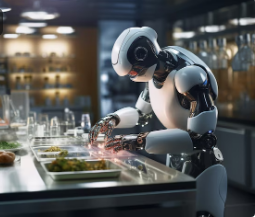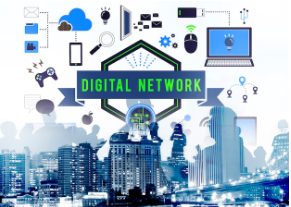As technology continues to evolve at a rapid pace, digital marketing is constantly adapting to keep up with new tools, platforms, and consumer behaviors. In 2024, several key trends are expected to shape the digital marketing landscape, offering businesses new opportunities to connect with their audiences and achieve their marketing goals. This article explores the top digital marketing trends to watch in 2024 and how businesses can leverage these trends to stay ahead of the competition.
1. Artificial Intelligence and Machine Learning
Enhanced Personalization:
- AI-Driven Insights: Artificial Intelligence (AI) and Machine Learning (ML) are transforming how businesses analyze data and understand customer behavior. By leveraging AI, marketers can gain deeper insights into customer preferences and tailor their marketing strategies accordingly.
- Chatbots and Virtual Assistants: AI-powered chatbots and virtual assistants are becoming more sophisticated, providing personalized customer interactions and support. These tools can handle a variety of tasks, from answering queries to recommending products, enhancing the customer experience.
Automated Content Creation:
- Content Generation: AI tools like GPT-4 are increasingly capable of generating high-quality content, including blog posts, social media updates, and email newsletters. This automation allows marketers to produce content more efficiently and at scale.
- Visual Content: AI can also assist in creating visual content, such as videos and graphics. Tools that use AI to design and edit visual content can save time and resources while maintaining creativity.
2. Voice Search Optimization
Growing Popularity of Voice Assistants:
- Voice Search: With the increasing use of voice assistants like Alexa, Siri, and Google Assistant, optimizing for voice search is becoming crucial. Businesses need to adapt their SEO strategies to account for the conversational nature of voice queries.
- Featured Snippets: Optimizing content to appear in featured snippets is essential for voice search visibility. These snippets often provide the direct answers that voice assistants read aloud.
Local SEO and Voice Search:
- Local Intent: Voice searches often have local intent, such as finding nearby businesses or services. Ensuring that local SEO is optimized, including accurate business listings and localized content, can enhance visibility in voice search results.
3. Video Marketing Dominance
Short-Form Video Content:
- TikTok and Reels: Platforms like TikTok and Instagram Reels continue to dominate with their short-form video content. Brands should create engaging, bite-sized videos that capture attention quickly and encourage sharing.
- YouTube Shorts: YouTube’s short-form video feature, YouTube Shorts, is gaining traction. Leveraging this platform can help brands reach a broader audience and increase engagement.
Live Streaming:
- Interactive Experiences: Live streaming offers real-time interaction with audiences, making it a powerful tool for engagement. Brands can use live streams for product launches, Q&A sessions, and behind-the-scenes content.
- Shoppable Videos: Integrating e-commerce with video content, shoppable videos allow viewers to purchase products directly from the video. This trend is expected to grow, providing a seamless shopping experience for consumers.
4. Social Commerce
Integrated Shopping Experiences:
- In-App Purchases: Social media platforms like Instagram, Facebook, and Pinterest are enhancing their e-commerce capabilities, allowing users to make purchases directly within the app. This integration streamlines the shopping experience and reduces friction.
- Influencer Partnerships: Collaborating with influencers for social commerce can drive sales. Influencers can showcase products in authentic ways, encouraging their followers to make purchases.
Augmented Reality (AR) in Shopping:
- Virtual Try-Ons: AR technology enables virtual try-ons, allowing customers to see how products like clothing, accessories, and cosmetics will look on them before making a purchase. This immersive experience can reduce return rates and increase customer satisfaction.
5. Data Privacy and Ethical Marketing
Compliance with Regulations:
- GDPR and CCPA: With increasing data privacy regulations such as the General Data Protection Regulation (GDPR) and the California Consumer Privacy Act (CCPA), businesses must ensure compliance. This includes transparent data collection practices and providing consumers with control over their data.
- Third-Party Cookies: As third-party cookies phase out, marketers need to adapt their strategies. First-party data collection and leveraging alternative tracking methods, such as contextual advertising, will be crucial.
Building Trust:
- Transparent Practices: Ethical marketing practices and transparency in data usage build trust with consumers. Brands should communicate clearly how they collect, store, and use customer data.
- Personalized yet Privacy-Friendly: Striking a balance between personalization and privacy is key. Brands should use data to enhance the customer experience without compromising privacy.
6. Content Marketing Evolution
Interactive Content:
- Quizzes and Polls: Interactive content such as quizzes, polls, and surveys can boost engagement and provide valuable insights into customer preferences.
- Interactive Infographics: These visually appealing and interactive infographics can convey complex information in an engaging and easy-to-understand format.
Long-Form Content:
- In-Depth Articles: While short-form content remains popular, there is also a growing demand for in-depth, long-form articles that provide comprehensive information and insights. These articles can improve SEO and establish authority.
- Ebooks and Whitepapers: Offering valuable resources like ebooks and whitepapers can attract and educate potential customers, positioning the brand as a thought leader in its industry.
7. The Rise of Niche Communities
Micro-Communities:
- Engagement in Niche Groups: Brands are increasingly engaging with niche communities and micro-communities on platforms like Reddit, Discord, and specialized forums. These communities allow for targeted marketing and authentic interactions.
- Brand Loyalty: Building a presence in niche communities can foster brand loyalty and create advocates who promote the brand organically.
Community-Driven Content:
- User-Generated Content (UGC): Encouraging UGC within niche communities can enhance authenticity and credibility. Brands can leverage customer reviews, testimonials, and social media posts to build trust and engagement.
Conclusion
The digital marketing landscape in 2024 will be shaped by advancements in technology, changing consumer behaviors, and evolving regulations. By staying informed about these trends and adapting their strategies accordingly, businesses can effectively connect with their audiences, drive engagement, and achieve their marketing goals. From leveraging AI and machine learning for personalization to optimizing for voice search and embracing social commerce, the key to success in 2024 lies in innovation, agility, and a customer-centric approach.








